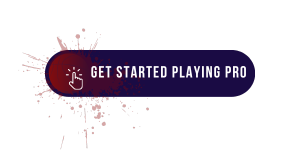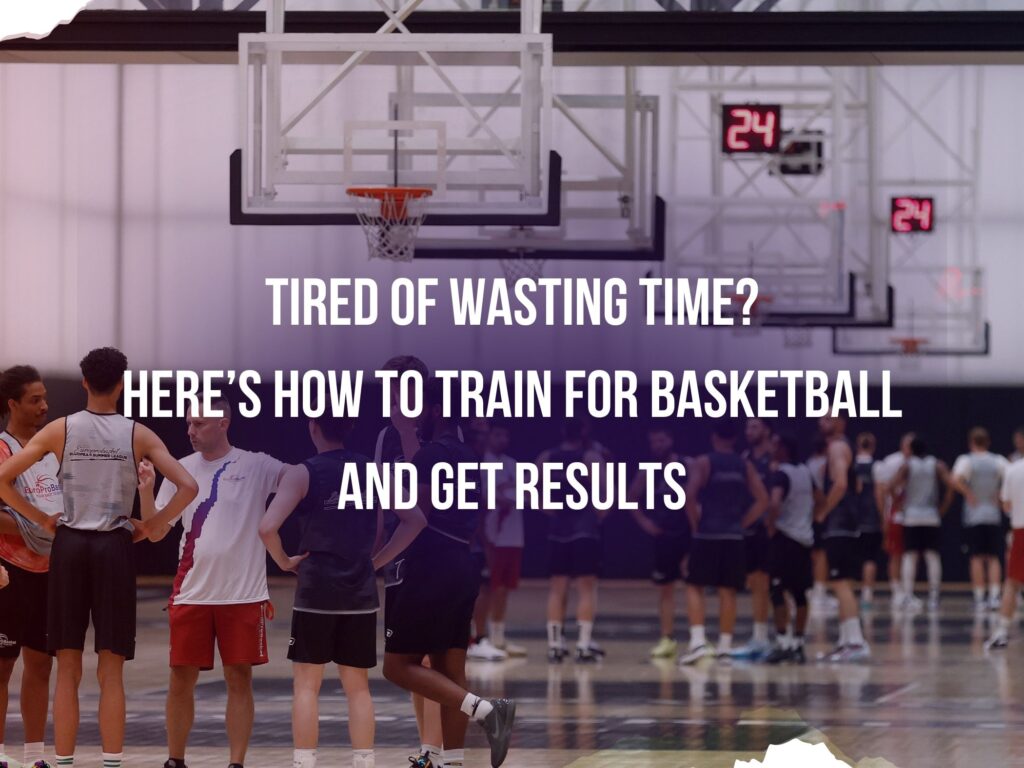Listen to an interview with any of the world’s best basketball players and they’ll say how important it is to know how to train for basketball.
If you’re one of many young players who want to follow in their footsteps, then you’ll probably agree, but you may find it difficult to train well and improve your basketball skills because:
- You don’t have a structured training program that gets you fitter and game-ready
- You don’t have anyone to train with and can’t get motivated to do it on your own
- You’re unsure which basketball workouts and drills will help you improve fastest.
However, the need for organized training is real if you want to become the best basketball player possible.
In this guide, we’re going to break down what it takes for you to nail your training so that you become more disciplined, focused, and prepared for game-time success.
Contents list
- Why basketball training is important
- How to train for basketball for beginners
- How to train for basketball alone
- How to train for basketball tryouts
Don’t take chances with your basketball training. Get in touch with EuroProBasket today to find out how we can help you become the best player possible.
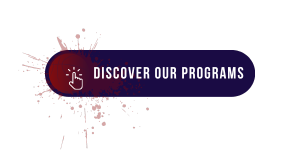
Table of Contents
ToggleWhy basketball training is important
As the legendary NBA player Stephen Curry wisely said, “The only way to get better at basketball is to put in the work and practice consistently.”
Regular basketball training is the only way to meet these two requirements. If you can do it well, you’ll find that your skills will improve, you’ll get fitter, and you’ll be much closer to game readiness.
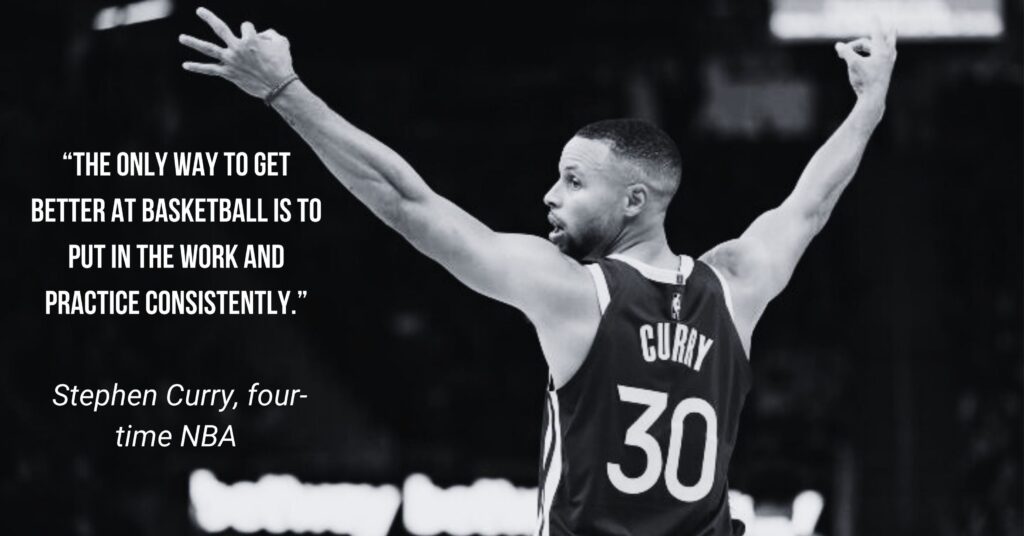
Regular training sessions will help you master the fundamentals of the game, and these will be built around shooting, passing, rebounding and dribbling drills to help you improve your ball handling and footwork.
They will also boost your physical fitness for basketball so that you’ll be stronger, quicker, and more agile.
As Stephen Curry mentioned, consistency is always the bottom line. It’s not good training like a warrior in one session then having a month off: you’ll find that you’ll have taken the edge off your skills and mentality when you return.
Dedicated training is the only way to earn big results. The next section looks at how you can get started with this.
How to train for basketball for beginners
Think of all the important things you learn in life, like how to drive a car or play an instrument. In all cases, you start off by learning the fundamentals and this is especially true for basketball.
Let’s take a tour of the essential components of a basketballer’s toolkit and look at the beginner drills you can start with, either on your own or with a friend or coach.
Note: if you’ve been playing for a while, then feel free to jump ahead to the next section.
1. The dribbling basics
Dribbling is a key skill that allows players to move the ball up and down the court, create space, and evade defenders.
(i) Stationary dribble: Practice dribbling the ball between your legs while standing still. Keep your eyes up and maintain ball control.
(ii) Crossover dribble: Learn how to change direction quickly by crossing the ball from one hand to the other.
(iii) Figure-8 dribble: This drill helps improve your footwork and ball control. Dribble the ball in a figure-8 pattern around your legs.
2. The passing basics
To state the obvious, passing allows players to move the ball from one teammate to another, but doing it well is crucial for building team moves and keeping your opponents on their toes.
(i) Chest pass: This is the most common pass. Hold the ball at chest level, extend your arms, and push the ball towards your teammate.
(ii) Bounce pass: Use this pass when there’s a defender between you and your teammate. Bounce the ball off the floor on its way to your teammate.
(iii) Overhead pass: This pass is useful for long distances. Throw the ball over your head to your teammate.
3. The shooting basics
Shooting is the most important skill in basketball, as it’s the only way to score points. It requires accuracy, consistency, and good form.
(i) Layups: Practice shooting close to the basket with both hands.
(ii) Jump shots: Start by practicing stationary jump shots from different distances.
(iii) Free throws: Focus on your form and consistency when shooting free throws and try it from different areas of the court.
4. Rebounding skills
Rebounding is when the ball bounces off the rim or backboard into a player’s hands. It allows you to regain possession of the ball after a missed shot. It’s important for both offensive and defensive play,
(i) Positioning: Learn to position yourself correctly under the basket to grab rebounds. If the shot is taken from the left side of the basket, for example, you should position yourself slightly to the left of the basket with knees bent in anticipation.
(ii) Box out: Use your body to block out opponents and secure rebounds.
(iii) Timing: Practice timing your jumps to grab rebounds effectively. A jump rope is a great way of honing this skill.
5. The defensive basics
Players often get lured into focusing on attacking play when they begin but learning how to defend well is an art. It will also improve your chances of getting onto a team by developing skills like footwork, anticipation, and blocking shots.
Note: These drills are best done with a friend or trainer while they have the ball.
(i) Stance: Maintain a low, athletic stance with your knees bent and your feet shoulder-width apart.
(ii) Footwork: Practice shuffling your feet laterally to stay in front of your opponent.
(iii) Hand activity: Use your hands to deflect passes, block shots, and contest dribbles.
6. Physical fitness
The fitter you are, the more stamina you’ll have for the drills that will make you a better basketball player.
You can improve your endurance through aerobic exercises like running or cycling, then build strength with exercises like squats and lunges. Flexibility is also key and stretching helps you do this by improving your range of motion.
How to train for basketball alone
Many of the above exercises, such as the defensive drills, will require another person to help you carry them out – but don’t be put off training if you find yourself alone.
You can still work on key areas without a partner. Gym work is one example, while you can still practice most dribbling and shooting drills alone.
YouTube videos are a great resource for this, with scores of videos from basketball pros (sometimes even NBA players) giving useful advice, ranging from basketball shooting tips to the ideal workout schedule for basketball players.
How to train for basketball tryouts
If you’ve been training for a while and maybe even played a competitive game or two, then you’ll probably be looking at getting onto a team.
Most teams stage tryouts for potential new players: these are simply training sessions or practice games where coaches choose the people they want for their team.
To take your game to the next level and maximize your chances of making the team, you’ll need to up your training, your basketball drills, and physical training.
Here’s an overview of how you can do this.
1. Advanced shooting training
Shooting is the most important basketball skill to master, according to almost three-quarters of coaches polled in a recent survey for basketball specialists OneUp.
Source: Oneup Basketball
But what separates an advanced shooter from a beginner?
EuroProBasket is a specialist basketball academy based in Valencia, Spain that includes shooting as a key skill in its pro curriculum for training basketball players. NBA-qualified coach Dave Love is one of the coaching staff there.
Love points out three “non-negotiables” that set the great shooters like Kobe apart from the average player.
“How you go about doing those three things could vary from player to player,” Coach Love says. “But the reality is those three things each need to happen in some way.”
These are as follows:
- Being balanced – A balanced stance is crucial for consistent shooting. Keep your feet shoulder-width apart and maintain a stable posture. Avoid creating unnecessary movements that can disrupt your shot.
- Hand placement – Ensure your shooting hand is positioned correctly underneath the ball. This helps generate a straight shot and prevents unwanted rotation. A straight line from your middle finger to the shooting arm is ideal.
- Arc – Getting sufficient arc on your shot is essential for increasing your chances of scoring. A flat shot has a smaller target, while a higher arc allows the ball to drop more directly onto the rim. To achieve a good arc, focus on getting your shooting hand underneath the ball and using a lifting motion with your shooting elbow.
“Confidence is not a product that we can teach,” says Coach Love. “It’s a byproduct that comes from having already done the work.”
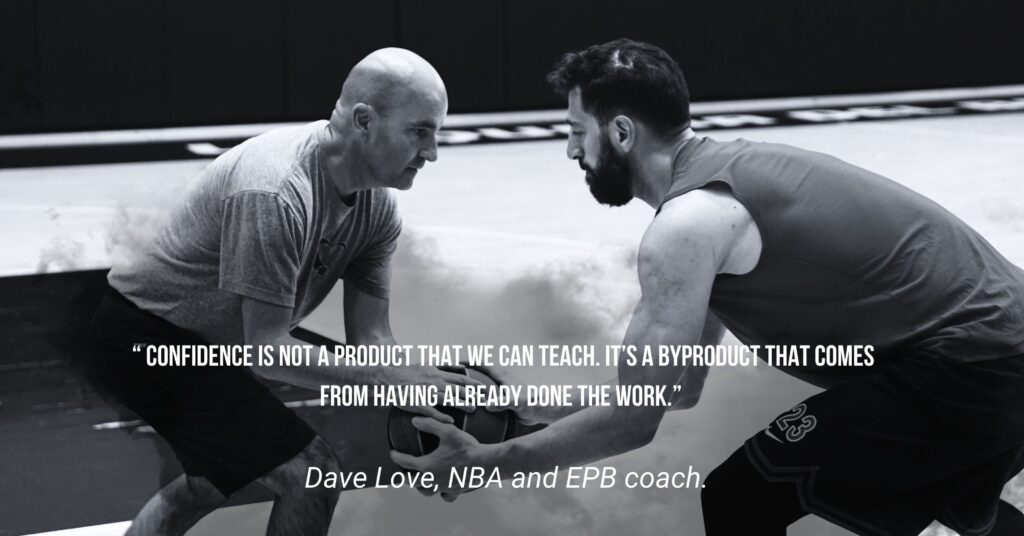
Practicing these three techniques within shooting drills will put you on the fast track to huge gains.
2. Advanced ball handling
Ball handling is a tough skill, but there are various basketball tryout drills you can do to get better at it.
The Line Dribble Series, for example, involves dribbling down the sideline and using various moves like the crossover, behind-the-back, and in-and-out dribbles.
The Zig-Zag Dribble with Pull-Up, too, requires dribbling in a zigzag pattern and then pulling up for a jump shot.
3. Advanced defensive work
Defensive drills are some of the toughest to coach, so it may be worth looking into how much a personal basketball trainer costs to get the expert advice you need to improve this area.
Specialist coaches, like those at EuroProBasket’s academy, are trained to teach you the defensive techniques you need to master a position like Point Guard.
“Remember that as a point guard, you set the tone in defense,” says EPB coach Pascal Meurs. This means you’ll need to focus on certain defensive techniques.
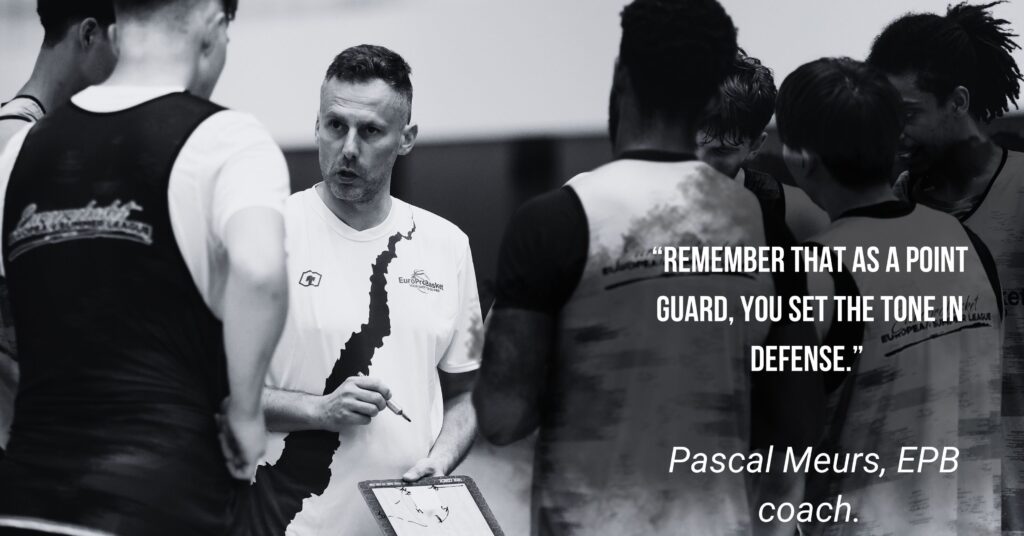
The 4 on 3 Overload Drill, for example, simulates basketball game situations where you have to scramble and match up with different opponents. It forces you to hustle, communicate, and rotate effectively.
The No Paint Defense Drill, meanwhile, emphasizes protecting the paint area and preventing opponents from penetrating inside. It’s a great way to develop your defensive mentality and practice proper defensive habits.
These drills can help you improve your 1-on-1 defense, closeouts, help positioning, rotations, communication, and overall defensive intensity.
4. Advanced passing drills
To excel at passing, you must focus on both technique and decision-making, which these drills can help with.
- 32 Advance: This drill emphasizes catching, passing, and layups. Players form three lines and pass the ball back and forth, progressing up the court.
- Monkey in the Middle: Here, you focus on passing accuracy and defensive pressure. Two players pass the ball while a third player attempts to intercept it.
- Swing Passing: This drill improves passing to players on the move. Players form a square and pass the ball around the perimeter.
- Fitness program for basketball players
To excel at tryouts, you need a detailed basketball fitness plan that focuses on improving your strength, speed, agility, and stamina.
An advanced basketball weight training program, on top of your skills training, will improve your chances of doing this.
Warm-up (10-15 minutes)
This should be light cardio (like jogging) and dynamic stretches, including leg swings, arm circles, and torso twists.
Strength Training (30-45 minutes)
Upper body
Pull-ups are a great bodyweight exercise that works all of your upper body. Try three sets of as many repetitions as possible. Dumbbell rows, tricep extensions, and push-ups will hit all the important muscle groups that basketball players use frequently.
Lower body
Squats, lunges, hamstring curls, and calf raises are all part of a very effective lower-body basketball workout plan that will help you build up your glutes and quads.
Core exercises
Doing sets of crunches, the Plank for 30-60 seconds, and Russian twist reps will help you develop a strong core.
Plyometrics
Plyometrics are exercises that focus on quick, explosive movements to build power and speed.
Box jumps, depth jumps, medicine ball slams, and lateral jumps are all key examples and help you improve your vertical jump and explosiveness.
Extra tip
Push yourself in the weight room to see maximum results, but remember to get enough sleep and rest to allow your muscles to recover. Drink plenty of water throughout the day and eat a balanced basketball player diet with plenty of fruits, vegetables, lean protein, and whole grains
EPB: How to train for basketball like a pro and unlock your full potential
Becoming a basketball player is an investment, and the cost of training can add up quickly.
In the U.S., many academies and coaches charge high hourly rates, which can make a full training program very expensive.
At EuroProBasket, we take a different approach.
Our mission is to help young athletes pursue their dream of a professional basketball career, and we do this by offering full programs at a lower hourly rate, making high-quality training more accessible and affordable.
The benefits of training with EPB:
- Professional coaching: Learn from experienced coaches who have worked with top-level players in the NBA and the EuroLeague.
- Tried-and-tested curriculum for training basketball players: Build your skills with a proven training system designed to maximize on-court performance
- Competitive experience: Gain valuable playing experience in our local club and leagues network,
- Overseas tryout preparation: Prepare for professional overseas basketball tryouts in Europe with our specialized training.
- All-inclusive programs: Our programs include quality accommodation and education.
- Ideal for high school and college basketball graduates: Our courses are perfect for players seeking to transition to a professional career.
Don’t take chances with your basketball development. Sign up for EPB’s curriculum for training basketball players and fast-track your journey to a professional career.
Want to maximize your chances of going pro? Contact EPB right now to find out how our training and guidance have helped so many athletes take the leap into the big time.
